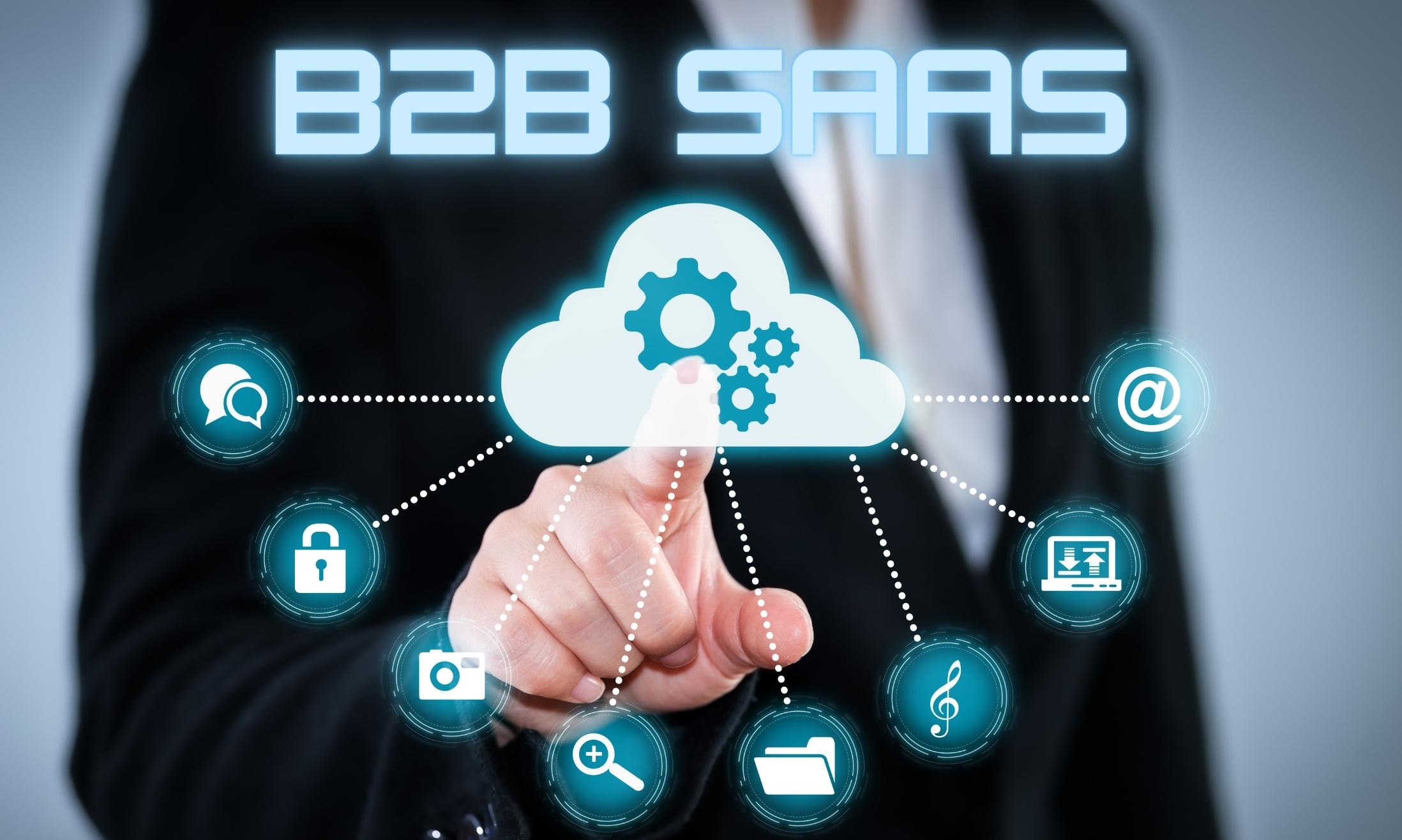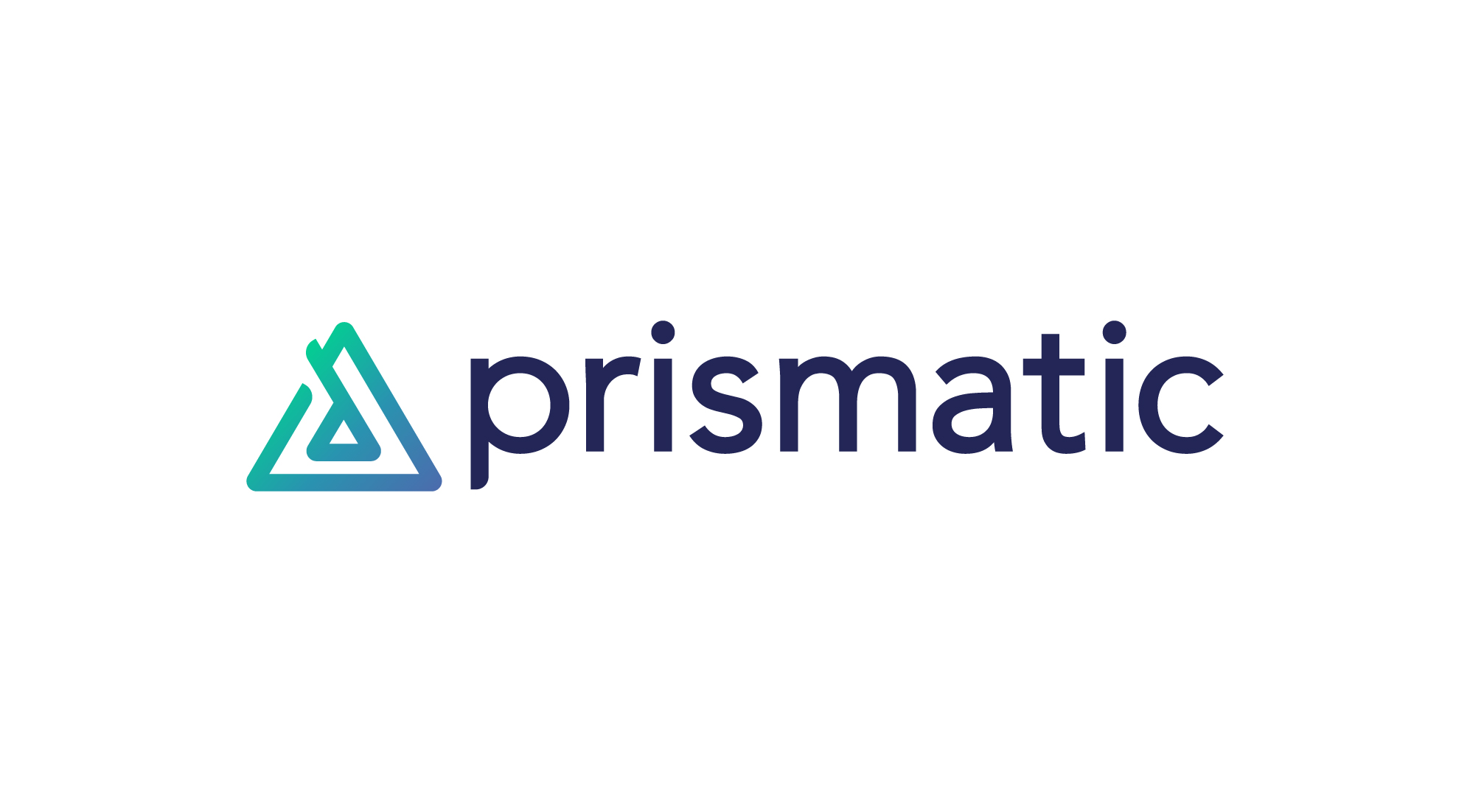Introduction
Welcome to our comprehensive guide on how to sell B2B SaaS! Selling software-as-a-service (SaaS) in a business-to-business (B2B) environment presents unique challenges and opportunities. B2B SaaS sales require a strategic approach to effectively communicate value propositions, build strong customer relationships, and overcome common sales hurdles.
In this article, we will dive deep into the world of B2B SaaS sales and provide you with practical tips and techniques to succeed in this competitive industry. Whether you’re a sales professional or a SaaS entrepreneur, understanding the intricacies of B2B SaaS sales is crucial to driving growth and revenue for your business.
Throughout this guide, we will explore the key elements that contribute to successful B2B SaaS sales. We’ll cover essential topics such as identifying your target market, crafting a compelling value proposition, generating leads, implementing effective sales strategies, building customer relationships, overcoming common challenges, leveraging referrals and testimonials, and measuring sales performance.
By the end of this guide, you will gain a solid understanding of the B2B SaaS sales landscape and be equipped with actionable insights to elevate your sales efforts. Whether you’re looking to optimize your current sales approach or kickstart a new B2B SaaS venture, this guide will serve as a valuable resource to help you achieve your goals.
So, if you’re ready to take your B2B SaaS sales to the next level, let’s begin our journey into the world of selling software-as-a-service in a B2B context. Strap in, and get ready for an enlightening and practical exploration of B2B SaaS sales!
Understanding B2B SaaS Sales
Before delving into the intricacies of selling B2B SaaS, it’s crucial to have a solid understanding of what exactly B2B SaaS sales entail. B2B SaaS refers to the selling of software-as-a-service solutions to other businesses instead of individual consumers.
One of the fundamental differences between B2B and B2C SaaS sales is the target audience. In B2B SaaS, you are selling to businesses that have specific needs, pain points, and goals. Understanding your target market’s industry, size, and organizational structure is essential to tailor your sales approach effectively.
Additionally, B2B SaaS sales typically involve longer sales cycles, as decision-making and purchasing processes are more complex in the B2B realm. Businesses often need to evaluate the potential return on investment, consider budgetary constraints, and ensure compatibility with their existing infrastructure before committing to a SaaS solution.
Another critical aspect of B2B SaaS sales is the recurring revenue model. Unlike traditional one-time sales, SaaS companies generate revenue through monthly or annual subscriptions. This ongoing revenue stream emphasizes the importance of customer retention and satisfaction in B2B SaaS sales.
Furthermore, B2B SaaS sales often require a consultative approach. Rather than simply selling a product, sales professionals must act as trusted advisors, understanding the unique challenges faced by potential customers and demonstrating how their SaaS solution can address those challenges effectively.
To succeed in B2B SaaS sales, it’s vital to continuously stay up to date with industry trends, technological advancements, and best practices. By keeping your finger on the pulse of the industry, you can position yourself as an expert and provide valuable insights to your prospects during the sales process.
Now that we have a foundational understanding of B2B SaaS sales, it’s time to explore how to identify your target market and craft a compelling value proposition. In the next sections, we will delve deeper into these critical aspects of B2B SaaS sales, providing you with actionable strategies to maximize your sales success.
Identifying Your Target Market
When it comes to selling B2B SaaS solutions, identifying your target market is a crucial first step. Understanding the specific industries, niche segments, and businesses that can benefit most from your SaaS offering will help you focus your sales efforts and tailor your messaging effectively.
Start by conducting thorough market research to gain insights into the industries and businesses that align with your SaaS solution. Evaluate market trends, industry growth projections, and competitive landscapes to identify potential target markets that have a higher likelihood of adopting your product.
Consider factors such as the size of the companies you’re targeting, their annual revenue, and their geographic location. Analyze their pain points and challenges and determine how your SaaS solution can address those pain points and provide value.
It’s also important to consider the decision-making dynamics within your target market. Determine who the key stakeholders are and understand their roles and responsibilities within the purchasing process. This insight will help you tailor your messaging and engage with the right individuals throughout the sales cycle.
Additionally, leverage customer data and feedback to refine your target market. Analyze the characteristics and demographics of your existing customer base to identify patterns and similarities. This information can help you identify new potential target markets and refine your value proposition to resonate with those audiences.
Another effective method for identifying your target market is to conduct customer interviews and surveys. This direct feedback from your existing customers can provide valuable insights into their needs, pain points, and reasons for choosing your solution. Use this information to refine your target market and align your sales and marketing strategies accordingly.
Remember, the more specific and well-defined your target market is, the more effective your sales efforts will be. Narrow down your target market to a manageable segment that you can effectively reach and engage with. This focused approach allows you to allocate your resources efficiently and tailor your messaging to resonate with your target market’s unique needs.
By identifying your target market, you can craft a personalized and compelling value proposition that speaks directly to their pain points and challenges. In the next section, we will explore how to build a strong value proposition that sets you apart from the competition and resonates with your target market.
Building a Strong Value Proposition
A strong value proposition is essential in B2B SaaS sales. It is the foundation of your messaging and the key to differentiating your SaaS solution from competitors. A well-crafted value proposition effectively communicates the unique value and benefits your SaaS solution brings to the table.
Start by understanding the pain points and challenges your target market faces. What are their most significant problems? How does your SaaS solution address those problems in a unique and superior way? The answers to these questions will form the basis of your value proposition.
When building your value proposition, focus on the specific outcomes and benefits your SaaS solution provides. Highlight how it can help businesses save time, increase efficiency, reduce costs, improve productivity, or achieve their goals. Use tangible and quantifiable examples to make your value proposition more compelling and relatable.
Another crucial element of a strong value proposition is understanding your competitive landscape. What sets your SaaS solution apart from similar offerings? Identify your unique selling points and emphasize them in your value proposition. Whether it’s advanced features, exceptional customer support, seamless integration, or industry expertise, make sure to highlight what makes your solution stand out.
Keep your value proposition concise and easy to understand. Your target market is busy, and you need to capture their attention quickly. Craft a clear and captivating headline that succinctly conveys the primary benefit of your SaaS solution. Follow it up with a brief supporting statement that highlights the key features and outcomes your target market can expect.
Consider leveraging social proof in your value proposition. Case studies, testimonials, and customer success stories can add credibility to your claims and demonstrate real-world examples of how your SaaS solution has delivered value to others in similar situations. This not only builds trust but also helps your target market envision the benefits they can achieve by using your solution.
Lastly, continuously refine your value proposition based on customer feedback and market trends. As you engage with potential customers and receive insights from existing customers, listen carefully to their needs and adjust your value proposition accordingly. Stay attuned to market changes and align your messaging to address evolving challenges and demands.
Building a strong value proposition is crucial in B2B SaaS sales. It forms the core of your messaging and helps you effectively communicate the unique value and benefits your SaaS solution brings to your target market. In the next section, we will explore the importance of lead generation and how to generate qualified leads for your B2B SaaS business.
The Importance of Lead Generation
Lead generation is a critical aspect of B2B SaaS sales. It refers to the process of attracting and capturing potential customers who have shown an interest in your SaaS solution. Effective lead generation strategies are essential for driving growth and expanding your customer base.
One of the main reasons lead generation is vital in B2B SaaS sales is because it helps you identify and focus your efforts on qualified prospects. By targeting individuals and businesses that have expressed interest in your solution, you can prioritize your resources and maximize your sales efforts.
Lead generation also allows you to build a database of potential customers who can be nurtured and engaged with over time. Not all leads will be ready to make a purchase immediately, but by maintaining regular communication and providing valuable content, you can stay top-of-mind and position yourself as a trusted advisor.
Additionally, lead generation contributes to a steady stream of new opportunities and potential revenue. As the market for B2B SaaS continues to evolve and become more competitive, it’s crucial to proactively generate leads to ensure a consistent pipeline and drive revenue growth.
Effective lead generation strategies can include a combination of inbound and outbound tactics. Inbound lead generation involves creating valuable content, optimizing your website for search engines, and leveraging social media and content marketing to attract potential customers to your SaaS solution.
Outbound lead generation, on the other hand, includes proactive outreach through methods such as cold calling, email marketing, and attending industry events. These strategies allow you to target specific businesses or decision-makers and initiate conversations about your SaaS solution.
Regardless of the lead generation tactics you choose, it’s important to ensure that your efforts align with your target market and are tailored to their needs and preferences. Personalization and relevance are key to capturing the attention and interest of potential customers.
It’s worth noting that lead generation is an ongoing process. Generating leads should be a consistent and continuous effort, as new prospects enter the market, customer needs evolve, and competition intensifies. Regularly evaluate and refine your lead generation strategies based on metrics and feedback to optimize your results.
In the next section, we will explore the various effective sales strategies and techniques that can help you convert leads into paying customers and drive revenue for your B2B SaaS business.
Effective Sales Strategies and Techniques
Having effective sales strategies and techniques is essential in B2B SaaS sales. These strategies help you navigate the complex sales process, build strong relationships with potential customers, and ultimately close deals. Let’s explore some key strategies and techniques that can elevate your B2B SaaS sales success.
1. Consultative Selling: B2B SaaS sales often require a consultative approach. Instead of focusing solely on selling, act as a trusted advisor to potential customers. Understand their pain points, challenges, and goals, and demonstrate how your SaaS solution can address their specific needs effectively.
2. Solution-Oriented Approach: Position your SaaS solution as a comprehensive solution to your customers’ problems. Emphasize the unique features, capabilities, and benefits that set your solution apart from competitors. Showcase real-life examples and case studies that demonstrate how your SaaS solution has helped businesses achieve their goals.
3. Effective Communication: Effective communication is vital throughout the sales process. Listen attentively to the needs and concerns of potential customers, ask insightful questions, and provide clear and concise information. Tailor your messaging to match the language and level of technical understanding of your audience.
4. Building Trust and Credibility: Establishing trust is crucial in B2B SaaS sales. Provide transparent and accurate information about your SaaS solution. Leverage social proof, such as customer testimonials and case studies, to build credibility and prove that your solution has delivered value to other businesses.
5. Effective Objection Handling: Anticipate and address potential objections that potential customers may have. Understand their concerns and hesitations and provide compelling responses that alleviate their fears. Position yourself as a knowledgeable partner who can address any potential issues that may arise.
6. Collaborating with the Right Decision Makers: Identify the key decision-makers within the potential customer’s organization and establish relationships with them. Understand their roles and responsibilities and tailor your messaging to address their specific needs and concerns.
7. Demonstrating ROI: B2B buyers need to see how your SaaS solution can deliver a strong return on investment. Show them how your solution can save them time, streamline processes, increase efficiency, and ultimately contribute to their bottom line. Quantify the potential cost savings or revenue growth that your solution can bring.
8. Follow-up and Nurturing: Establish a system for consistent follow-up and nurturing of leads. Stay in touch with potential customers, provide them with valuable content, and address any additional questions or concerns they may have. This ongoing engagement helps build trust, strengthens the relationship, and increases the chances of closing the deal.
Remember, the sales process can be lengthy in B2B SaaS, so patience and persistence are key. Continuously refine your sales strategies based on feedback and market trends, and always strive to provide exceptional customer service and support.
In the next section, we will explore how to build and nurture strong customer relationships, a crucial element in successful B2B SaaS sales.
Building and Nurturing Customer Relationships
In B2B SaaS sales, building and nurturing customer relationships is vital to long-term success. Strong relationships not only lead to customer loyalty but can also result in referrals and repeat business. Let’s explore some key strategies for building and nurturing customer relationships in the B2B SaaS industry.
1. Personalized Communication: Tailor your communication to each customer, addressing their specific needs and concerns. Personalization shows that you value their business and fosters a sense of trust and loyalty.
2. Regular Check-ins: Stay in touch with your customers even after the initial sale. Regular check-ins provide an opportunity to gather feedback, address any issues, and reinforce the value of your SaaS solution.
3. Customer Success Programs: Develop customer success programs to help customers achieve their goals with your SaaS solution. Provide resources, training, and support to ensure they are getting the most out of their investment.
4. Proactive Support: Anticipate and address any issues that customers may encounter promptly. Be proactive in providing assistance and resolving problems efficiently. This level of support builds trust and strengthens the relationship.
5. Continued Education: Offer ongoing educational resources to help customers stay up to date with new features, best practices, and industry trends. This not only enhances their experience but also demonstrates your commitment to their success.
6. Ask for Feedback: Encourage customers to provide feedback on their experience with your SaaS solution. Actively seek input on how you can improve and make necessary adjustments based on their suggestions.
7. Customer Advocacy: Identify customers who are advocates of your SaaS solution and nurture those relationships. Leverage their testimonials and referrals to enhance your credibility and attract new customers.
8. Upselling and Cross-selling: Continuously look for opportunities to expand your relationship with customers by presenting additional relevant offerings. Upselling and cross-selling can increase customer lifetime value and solidify the partnership.
9. Monitor and Measure: Regularly monitor customer satisfaction and engagement metrics to gauge the health of your customer relationships. Analyze data and use insights to identify areas for improvement and optimize your customer relationship management strategies.
10. Celebrate Milestones: Acknowledge and celebrate important milestones and achievements with your customers. Recognize their successes and demonstrate your commitment to their growth and success.
Remember, building and nurturing customer relationships is an ongoing effort. Each customer is unique, and it’s crucial to adapt your approach based on their individual needs and preferences. By investing in strong customer relationships, you not only foster loyalty but also create advocates who can champion your SaaS solution to others.
In the next section, we will address common sales challenges in the B2B SaaS industry and provide strategies to overcome them.
Overcoming Common Sales Challenges
While B2B SaaS sales offer significant opportunities, they also present their fair share of challenges. Understanding and proactively addressing these challenges can position you for success. Let’s explore some common sales challenges in the B2B SaaS industry and strategies to overcome them.
1. Long Sales Cycles: B2B SaaS sales often involve longer sales cycles due to complex decision-making processes. To overcome this challenge, focus on building strong relationships and providing valuable insights throughout the buyer’s journey. Demonstrate the long-term value and ROI of your SaaS solution to maintain interest and engagement.
2. Competition: The B2B SaaS market is highly competitive, with numerous players vying for customers’ attention. To stand out from the competition, clearly communicate the unique value and differentiation of your solution. Highlight your expertise, customer success stories, and the specific benefits that set your SaaS apart from others.
3. Budget Constraints: B2B buyers often face budget constraints when considering new investments. It’s crucial to articulate the financial benefits and cost savings that your SaaS solution can provide. Consider offering flexible pricing options or demonstrating how your solution can help them reduce costs or optimize their current budget.
4. Complex Sales Processes: B2B SaaS sales involve multiple stakeholders and decision-makers. To navigate this complexity, identify and engage with the key decision-makers early on. Tailor your messaging to address the specific needs and motivations of each stakeholder to ensure consensus and drive the sales process forward.
5. Adapting to Evolving Needs: Industries and businesses constantly evolve, resulting in changing needs and priorities. Successful sales professionals in the B2B SaaS industry regularly monitor market trends and proactively adjust their strategies. Stay up to date with industry developments and actively communicate how your solution can adapt to and address emerging challenges.
6. Skepticism and Resistance: B2B buyers can be skeptical and resistant to change. To overcome this challenge, focus on building trust through transparent communication, social proof, and references from satisfied customers. Develop a deep understanding of your prospect’s concerns and address them directly, offering insights and evidence that alleviate their skepticism.
7. Managing Rejection: Sales professionals encounter rejection regularly. It’s essential to develop resilience and not take rejection personally. Learn from each experience, gather feedback, and refine your approach accordingly. Maintain a positive mindset and consistently adapt your strategies to improve your success rate.
8. Staying Motivated: B2B SaaS sales can be demanding and competitive. It’s crucial to maintain motivation and focus on your long-term goals. Cultivate a supportive network, celebrate small victories, and regularly reassess and refine your sales strategies. Continuous learning and personal development can also help you stay motivated and engaged.
By recognizing and addressing these common sales challenges, you can position yourself for success in the B2B SaaS industry. Each challenge presents an opportunity for growth and improvement. Stay proactive, adaptable, and focused on delivering value to your prospective customers.
In the next section, we will explore the power of leveraging referrals and testimonials in B2B SaaS sales.
Leveraging Referrals and Testimonials
Referrals and testimonials are powerful tools that can significantly impact B2B SaaS sales. Leveraging the positive experiences and recommendations of satisfied customers can build trust, credibility, and help attract new leads. Let’s explore how you can effectively harness the power of referrals and testimonials in your B2B SaaS sales efforts.
1. Delight and Engage Your Customers: Providing exceptional customer experiences is the first step to generating referrals and testimonials. Consistently deliver on your promises, exceed expectations, and go above and beyond to ensure customer satisfaction. Engage with your customers, listen to their feedback, and proactively address any concerns they may have.
2. Ask for Referrals: Actively seek referrals from your satisfied customers. Don’t hesitate to ask if they know other businesses or individuals who could benefit from your SaaS solution. If your customers are happy with your product, they will likely be willing to refer you to their network.
3. Provide Incentives: To encourage customers to refer others, consider offering referral incentives such as discounts, free upgrades, or exclusive access to new features. These incentives can motivate your customers to actively participate in referring your SaaS solution to others.
4. Automate Referral Processes: Streamline the referral process by implementing automated referral programs. Provide a simple and convenient way for customers to refer others, track referrals, and reward them for their efforts. Automating the process ensures that referrals are captured efficiently and consistently.
5. Showcase Testimonials: Display testimonials prominently on your website, landing pages, and marketing materials. Make sure the testimonials highlight the specific benefits and outcomes that your SaaS solution has delivered to customers. Use real quotes or video testimonials to provide a more authentic and relatable experience for potential leads.
6. Create Case Studies: Develop in-depth case studies that showcase the success stories of your customers. Highlight their challenges, how your SaaS solution helped them overcome those challenges, and the specific results they achieved. Case studies provide tangible evidence of the value your solution can bring to other businesses.
7. Utilize Social Proof: Leverage social proof to establish credibility and build trust. Display logos of well-known and reputable companies that are using your SaaS solution. Highlight any industry recognition, awards, or certifications your solution has received. Social proof helps potential customers feel more confident in choosing your SaaS solution.
8. Encourage Online Reviews: Actively encourage your customers to leave reviews on relevant online platforms such as directories, review sites, or industry-specific forums. Positive online reviews can significantly impact potential customers’ perception of your SaaS solution and increase their trust in your brand.
Remember, referrals and testimonials are powerful tools, but they should be genuine and earned. Focus on providing exceptional experiences for your customers, and they will be more likely to advocate for your SaaS solution. Continuously monitor and update your testimonials and leverage them strategically throughout your sales and marketing efforts.
In the next section, we will discuss how to measure and evaluate your sales performance in the B2B SaaS industry.
Measuring and Evaluating Sales Performance
Measuring and evaluating sales performance is crucial in the B2B SaaS industry. It allows you to gain insights into the effectiveness of your sales strategies, identify areas for improvement, and make data-driven decisions. Let’s explore key metrics and strategies for measuring and evaluating sales performance in the B2B SaaS industry.
1. Revenue Metrics: Start by measuring revenue-related metrics, such as monthly recurring revenue (MRR), annual recurring revenue (ARR), and customer lifetime value (CLTV). These metrics provide an overview of your sales performance and revenue growth. Track these metrics regularly to assess the overall health of your business.
2. Sales Conversion Rates: Measure conversion rates at various stages of the sales funnel to identify areas for improvement. Track metrics such as lead-to-opportunity conversion rate, opportunity-to-deal conversion rate, and deal closure rate. Evaluate the effectiveness of your sales process and identify bottlenecks or areas that require attention.
3. Sales Pipeline Metrics: Monitor your sales pipeline to assess the health and predictability of your future revenue. Track metrics such as the number of leads, opportunities, and deals in each stage of the pipeline. Analyze the pipeline velocity, average deal size, and average sales cycle length to identify patterns and trends that can guide your sales strategy.
4. Activity Metrics: Evaluate the activities of your sales team to gauge their productivity and effectiveness. Measure metrics such as the number of calls made, emails sent, meetings scheduled, and demos conducted. Assess the quality and effectiveness of these activities to ensure your sales team is focused on the right actions that drive results.
5. Win-Loss Analysis: Conduct win-loss analysis to understand why deals were won or lost. Identify common themes, objections, or competitive factors that influenced the outcome. Use these insights to refine your sales strategies, address weaknesses, and leverage strengths in future opportunities.
6. Customer Satisfaction Metrics: Measure customer satisfaction through metrics like Net Promoter Score (NPS), customer surveys, or feedback ratings. Collect feedback on their experience with your sales process, implementation process, and ongoing support. Identify areas where you can improve customer satisfaction and address any issues that may impact retention and renewals.
7. Sales Team Performance Metrics: Evaluate individual sales team performance by tracking metrics such as revenue generated per salesperson, average deal size, and quota attainment. Identify high performers, provide coaching and training to underperformers, and foster a culture of continuous improvement within your sales team.
8. Competitive Analysis: Continuously analyze and evaluate your performance relative to your competitors. Monitor market share, customer churn rates, and win rates against key competitors. Identify areas where you differentiate and areas where you may need to strengthen your value proposition to stay competitive.
Regularly review and analyze these metrics to gain a comprehensive understanding of your sales performance. Identify trends, patterns, and areas for improvement. Use the data to make informed decisions, refine your sales strategies, and guide your overall business growth strategy.
In the next section, we will provide some concluding thoughts and insights to help you implement the strategies and techniques covered in this guide and drive success in your B2B SaaS sales efforts.
Conclusion
Congratulations! You’ve reached the end of our comprehensive guide on how to sell B2B SaaS. We have covered various aspects of B2B SaaS sales, from understanding the industry to building customer relationships, and overcoming common sales challenges. By implementing the strategies and techniques discussed in this guide, you can elevate your B2B SaaS sales and drive growth for your business.
Remember, identifying your target market and building a strong value proposition are the foundational steps to effective B2B SaaS sales. The importance of lead generation and nurturing customer relationships cannot be overstated, as they provide a consistent pipeline and foster loyalty. Additionally, employing effective sales strategies, leveraging referrals and testimonials, and measuring sales performance are key to staying ahead in the competitive B2B SaaS landscape.
As you embark on your B2B SaaS sales journey, remember to stay adaptable, continuously learn from customer feedback, and refine your approach. B2B SaaS sales require a consultative mindset, effective communication, and a focus on addressing the unique needs and challenges of your target market.
Above all, prioritize building strong relationships with your customers. Deliver exceptional experiences, engage with them on a personal level, and provide ongoing support. Satisfied customers will become your brand advocates and help drive new leads through referrals and testimonials.
Finally, remember that success in B2B SaaS sales is an ongoing journey. Continuously monitor market trends, adapt to changes, and refine your strategies based on data and feedback. Embrace challenges as opportunities for growth and use them to refine and strengthen your sales approach.
By following the insights and strategies provided in this guide, you are well-equipped to excel in the world of B2B SaaS sales. Best of luck in your sales endeavors, and may your efforts bring you success and fulfillment in your B2B SaaS sales journey!

























